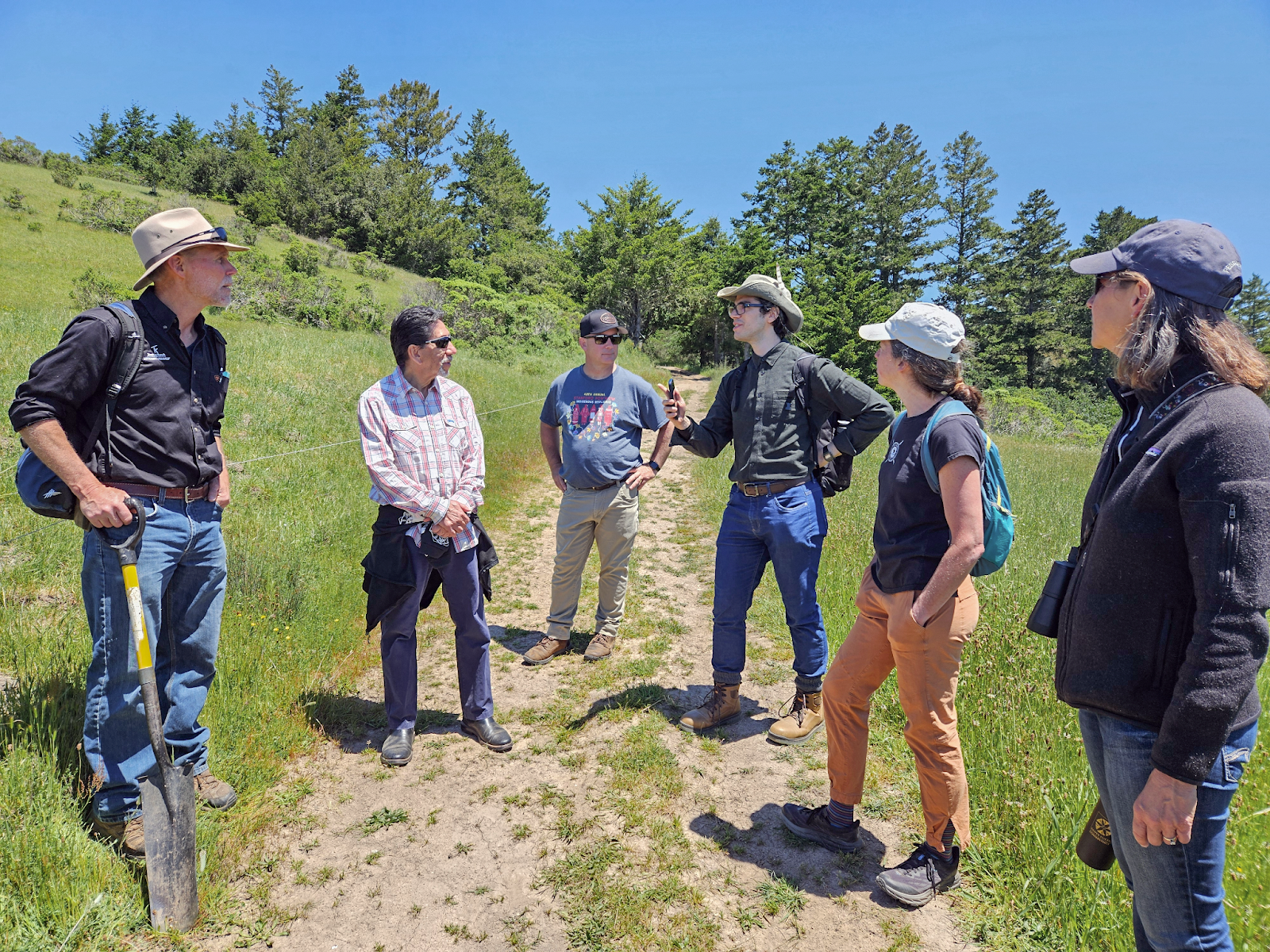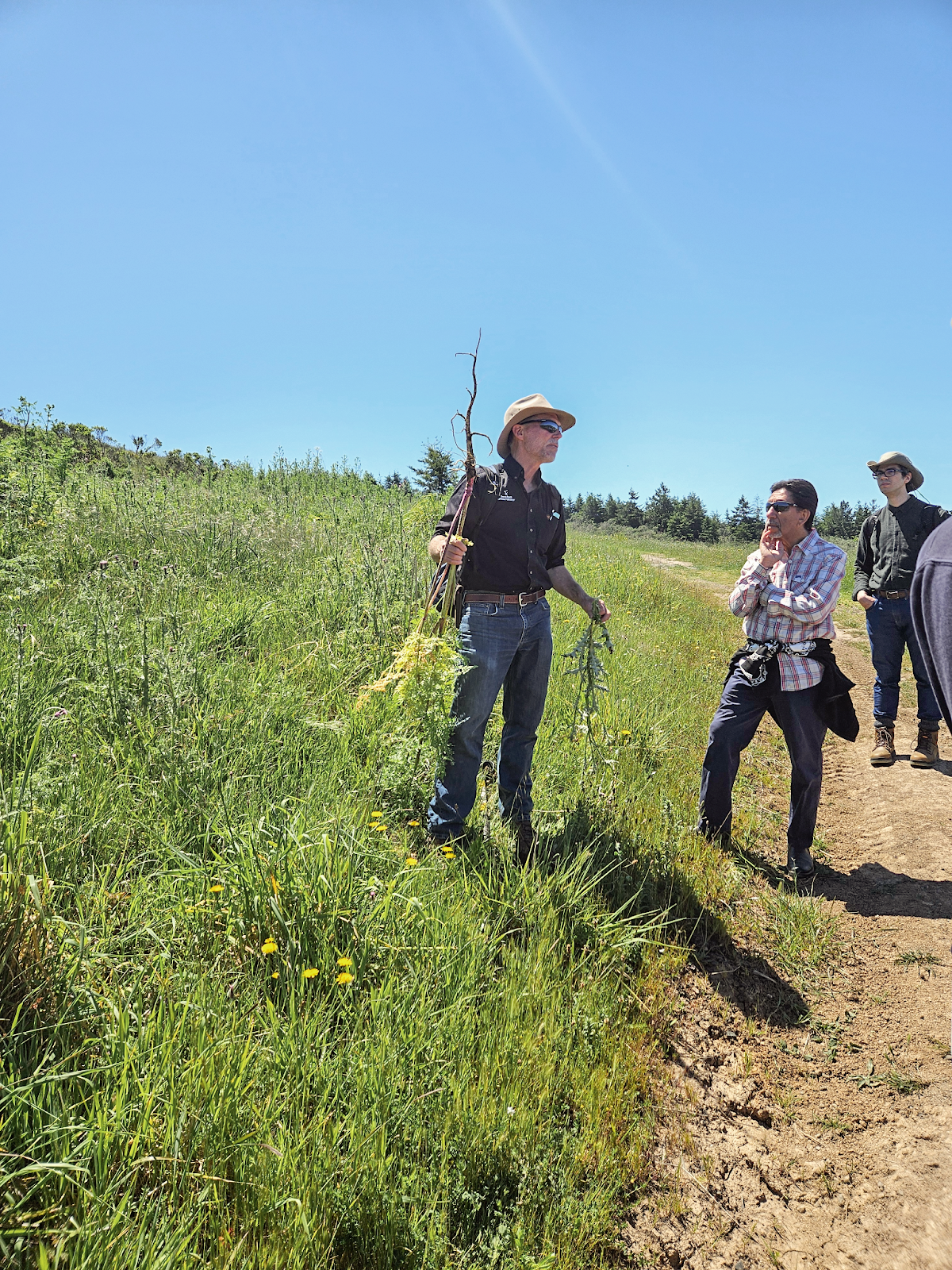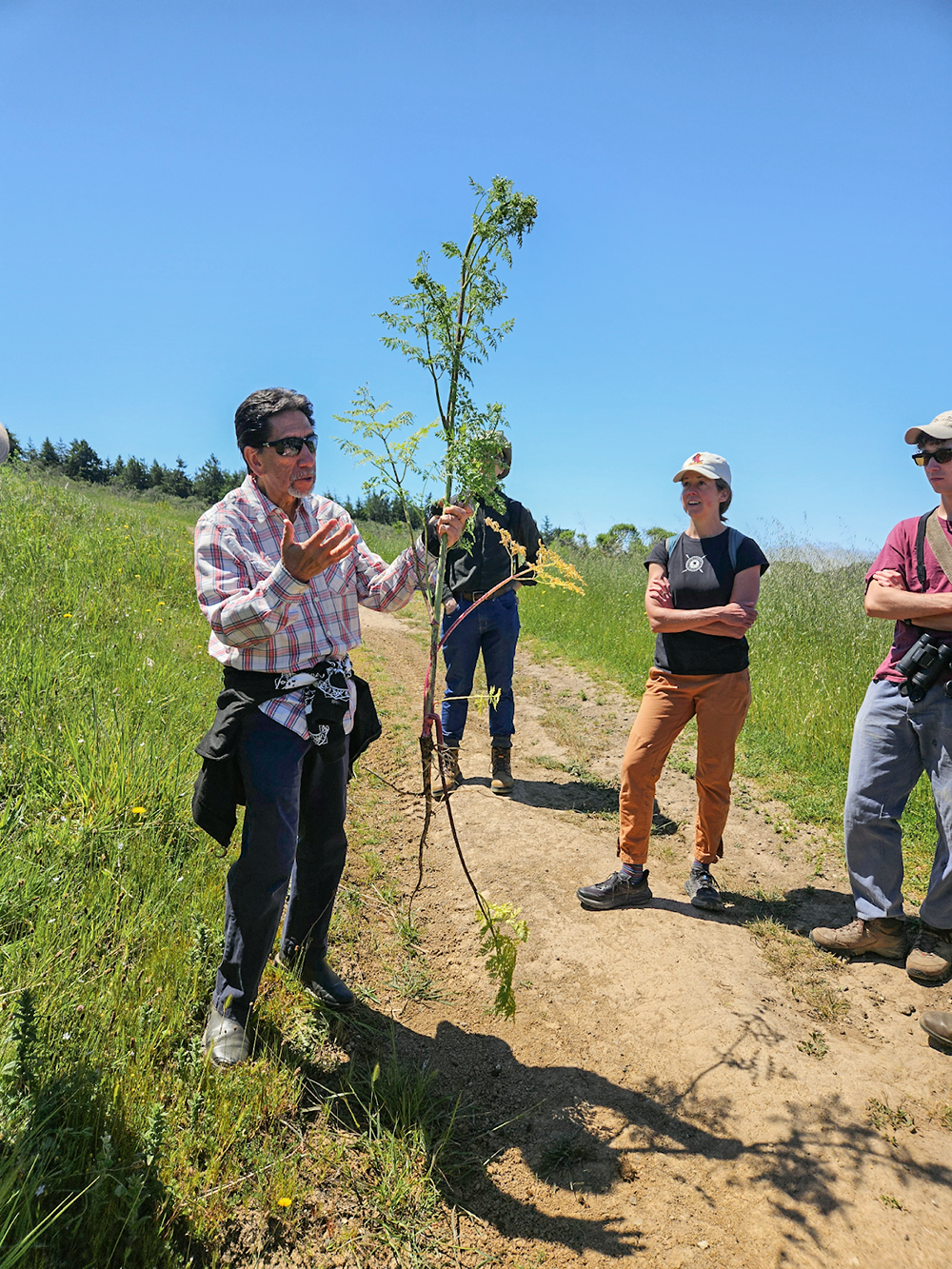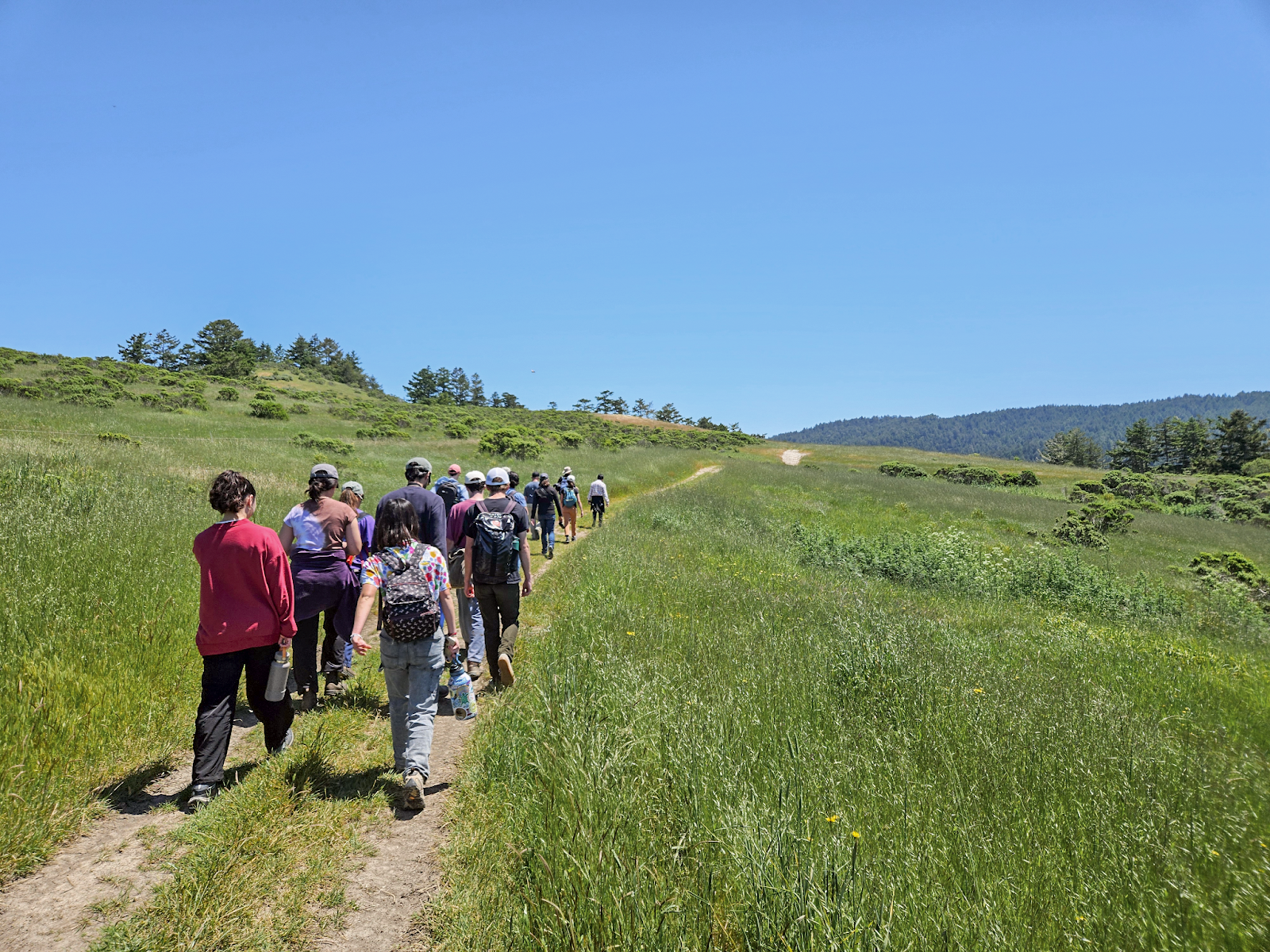professors and students from Stanford University’s Biology/Earth Systems course titled Ecology and Natural History of the Jasper Ridge Biological Preserve ‘Ootchamin ‘Ooyakma (JRBPOO) visited TomKat Ranch.
A Letter from Stanford Bio 105

08/22/2024
By: Wendy Millet, Rodolfo Dirzo and Tom Schnaubelt
Earlier this year, the professors and students from Stanford University’s Biology/Earth Systems course titled Ecology and Natural History of the Jasper Ridge Biological Preserve ‘Ootchamin ‘Ooyakma (JRBPOO) visited TomKat Ranch to learn about holistic land management and ways of reading land that they could use to compare to other landscapes they study.
Professor Rodolfo Dirzo and Lecturer Tom Schnaubelt wrote us a letter in gratitude, excerpted below.

Over 25 years, Stanford’s Biology 105 class has focused on the ecology and natural history of Jasper Ridge Biological Preserve, a field station with no human activities other than research and education. However, for the first time this year we included an excursion to another place to provide a complementary view of biodiversity within a matrix of “working lands”. We are extremely fortunate that TKREF provided this unique opportunity.
The trip across the San Andreas fault and Santa Cruz mountains to TomKat Ranch furnished a unique opportunity to see how ecological principles learned in the course are applied in regenerative agricultural practices. For example, students learned how ranch manager Mark Biaggi uses non-native species such as harding grass and poison hemlock to understand what the land needs, and how he applies swath grazing techniques to improve soil health and biodiversity while decreasing both feed costs and wildfire fuel availability. Students also learned from Cata Gomes of the Muchia Té Indigenous Land Trust how these practices evolved from local indigenous practices, and were treated to a locally-sourced gourmet lunch prepared by chef Tim Edmonds.

Professor Dirzo noted that “TomKat Ranch offered a unique opportunity to complement the educational goals and aspirations of my class in a unique way by allowing us to put our study site, Jasper Ridge, in the context of how conservation can be made compatible with sustainable use of resources.”
Tom Schnaubelt, newly minted JRBPOO docent and one of the organizers of the excursion, noted that he “appreciated the exposure to the ranch operations as an exemplar of how to create positive social change related to food systems, environmental justice, and climate change, particularly in such polarized times.”
Students in the class hailed from many different places around the world, and their careers will likely take them to still more geographically diverse locations. As the students reflected on the lessons of the day, ranch director Wendy Millet stated her hope that they remember always that deep awareness of place is key to how scientists, indigenous peoples, ranchers and farmers alike become effective stewards of lands they are entrusted with.

We appreciate the opportunity to share our work with students interested in learning to read and heal the cycles of nature. We see the opportunity for a regenerative future in each of their questions, and look forward to hosting them again in the future.